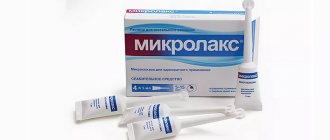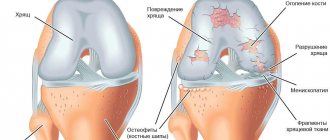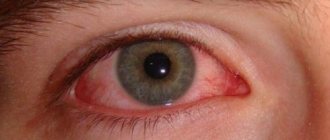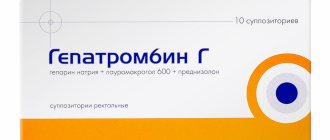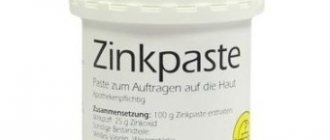What is the mechanism of drug action
The ointment has 3 main effects. It promotes tissue healing, affects metabolism and relieves inflammation. After contact with the wound area, the active substance interacts with the main proteins, for example, albumin. The active substance is involved in processes such as carbohydrate and lipid metabolism, the formation of hormones, mediators and porphyrins. "Dexpanthenol" has a regenerative effect not only on tissues, but also on mucous membranes. The drug also helps stabilize cellular metabolism and accelerate cell mitosis. Elimination is very fast.
RELINS eye drops with dexpanthenol 2% and hyaluronic acid 0.15%, volume 10 ml
Name
Description
Colorless or yellowish transparent liquid without foreign inclusions.
Main active ingredient
Dexpanthenol + sodium hyaluronate.
Release form
Eye drops.
Dosage
2% + 0.15% 10 ml.
pharmachologic effect
Regeneration. The drug contains dexpanthenol, which is a B vitamin and a derivative of pantothenic acid. It is involved in carbohydrate and fat metabolism, has a regenerating effect on the mucous membranes of the eyes, increases the rate of cell division and enhances the strength of collagen fibers. In addition, moisturizing eye drops with dexpanthenol have a mild anti-inflammatory effect. Long lasting hydration. High molecular weight hyaluronic acid at a concentration of 0.15% consists of large molecules that form a kind of network, retaining water and protecting the eyes from negative influences. At the same time, water remains on the surface of the eyes much longer, which protects them from adverse effects. Being a natural biopolymer, hyaluronic acid naturally fits into metabolic and biological processes during the use of the drug, and therefore is able to firmly bind and retain water molecules, creating a lasting moisturizing effect. Thus, drops for dry eyes eliminate irritation and redness. Dexpanthenol has an anti-inflammatory effect and stimulates regeneration processes. The high molecular weight hyaluronic acid included in the composition at a concentration of 0.15% provides active hydration of the eyes. Thanks to the active components of the composition, when using RELINS® drops, a uniform film is formed on the surface of the eye, ensuring a long-lasting effect of use.
Indications for use
This ophthalmic agent is intended to moisturize and improve the healing process of the eye with a variety of injuries, as well as as an auxiliary therapy for various eye diseases. For eye injuries of various etiologies; If there are microcracks in the eye; For corneal erosion; When the eyes are red; Rehabilitation period after undergoing ophthalmic surgical interventions (surgical and laser); As an additional therapy to the main treatment of infectious processes (bacterial, viral or fungal etiology, etc.) in the cornea; As an additional therapy to the main treatment for diseases and injuries of the eyes of various etiologies (keratitis, keratoconjunctivitis, insufficient lacrimation, Stevens-Johnson syndrome, Sjögren's disease, corneal erosions, eye burns, dystrophic changes in the cornea of various origins.
Directions for use and doses
RELINS® drops with dexpanthenol 2% and hyaluronic acid 0.15% are compatible with all types of hard and soft contact lenses and contribute to their comfortable wearing, and no need to first remove the lenses for instillation. Before using the drops, wash your hands thoroughly with soap and water. Place drops into clean eyes. It is necessary to instill drops into each eye - 1-2 drops, as needed, throughout the day. Blink and wait until the drops are completely distributed over the eye. Do not use other ophthalmic agents for 15 minutes.
Contraindications
Hypersensitivity to the components of the drops. An allergic reaction to any component of the drops.
Compound
Sterile isotonic borate buffer solution, which contains: dexpanthenol (2%) hyaluronic acid (0.15%) EDTA disodium salt dihydrate surfactants (not more than 0.00023%)
Storage conditions
Store in a tightly closed bottle, protected from direct sunlight, at a temperature of +1 to +25 ° C, at a relative humidity of no more than 80% (at 25 ° C). Shelf life: 2 years, no more than 90 days after opening the bottle.
Buy RELINS eye drops with dexpanthenol 2% and hyaluronic acid 0.15%, volume 10 ml in the pharmacy
Price for RELINS eye drops with dexpanthenol 2% and hyaluronic acid 0.15%, volume 10 ml
Instructions for use for RELINS eye drops with dexpanthenol 2% and hyaluronic acid 0.15%, volume 10 ml
When to use
"Dexpanthenol" is most often used to accelerate healing for minor microtraumas. Can be used on mucous membranes in the presence of erosions. The drug helps fight dry and cracked skin and is indicated for burns and minor abrasions. Sometimes the ointment is prescribed to patients with bullous dermatitis, suppuration and trophic ulcers. It is allowed to be used for the treatment and prevention of bedsores in bedridden patients. The ointment is applied to aseptic wounds for transplantations that do not take root well after operations, but constant monitoring by the attending physician is required.
Buy Dexpanthenol ointment 5% 30g in pharmacies
Instructions for use Dexpanthenol
Buy Dexpanthenol ointment 5% 30g
Dosage forms ointment for external use 5% Manufacturers Vertex CJSC (Russia), Tatkhimfarmpreparaty (Russia) Group Group of pantothenates Composition Active substance: dexpanthenol. International nonproprietary name Dexpanthenol Synonyms Bepanten, D-Panthenol, Dexpanthenol-Hemofarm, Depanthenol, Korneregel, Moreal-plus, Panthenol, Panthenol Pharmstandard, Panthenol-Teva, Panthenolspray, Pantoderm Pharmacological action Dexpanthenol is a derivative of pantothenic acid. Pantothenic acid, a water-soluble B vitamin, is a component of coenzyme A. It stimulates skin regeneration, normalizes cellular metabolism, and increases the strength of collagen fibers. An increased need for pantothenic acid is observed when the skin or tissues are damaged, and its deficiency can be compensated for by the local use of dexpanthenol. Optimal molecular weight, hydrophilicity and low polarity make it possible to penetrate into all layers of the skin. Has a regenerating, weak anti-inflammatory effect. When applied topically, it is quickly absorbed and converted into pantothenic acid and binds to plasma proteins (mainly beta-globulin and albumin). Indications for use Violations of the integrity of the skin caused by mechanical, chemical, temperature factors or after surgical interventions: burns of various origins (including sunburn); scratches, abrasions, wounds; bedsores; poorly healing skin grafts; aseptic postoperative wounds; Inflammatory processes on the skin; dermatitis; boils; trophic ulcers of the lower extremities; skin care around tracheostomy, gastrostomy and colostomy. Treatment and prevention of the consequences of adverse effects on the skin of environmental factors (cold, wind, dampness). In children - diaper dermatitis, scratches and minor irritation after exposure to the sun, ultraviolet and x-rays; treatment and prevention of diaper rash. Cracks and inflammation of the nipples of the breast in nursing mothers. It is also used to treat and protect dry skin as a source of neutral fats and dexpanthenol. Contraindications Hypersensitivity to any of the components of the drug. Side effects Side effects develop extremely rarely. Slightly expressed allergic reactions are possible. Interaction No data available. Directions for use and dosage: The ointment is applied 2-4 times a day (more often if necessary). Apply a thin layer to the affected area of the skin, rubbing lightly. If applied to an infected skin surface, it should be pre-treated with any antiseptic. For nursing mothers, lubricate the surface of the nipple with ointment after each breastfeeding. Infants apply ointment after each change of linen or water procedure. Overdose No data available. Special instructions Treatment of trophic ulcers and poorly healing skin grafts should be carried out under the supervision of the attending physician. Do not apply to wet wounds. Storage conditions: In a dry place, protected from light, out of reach of children, at a temperature not exceeding 25 C.
How to use for pregnant women and children
Use in children is no different from adults.
The ointment is approved for use by pregnant and lactating women. For treatment in the breast area around the areola in women during breastfeeding, Dexpanthenol is recommended in the form of compresses. Before starting feeding, it is necessary to remove the remaining ointment with running water, without using soap, which can dry out the treated area.
"Dexpanthenol" is also necessary for restoring the skin from diaper rash in newborns.
Dexpanthenol gel for external use. approx. 40 mg/g 30 g tube No. 1
Dexpanthenol International nonproprietary name: Dexpanthenol. Dosage form: gel for external use 40 mg/g.
Description of the dosage form: colorless or with a yellowish tint, opaque gel, uniform in consistency. Air bubbles are allowed.
Composition: 1 g of gel contains 0.04 g of dexpanthenol as an active ingredient. Excipients: ethyl alcohol, glycerin, carbomer, dimethyl sulfoxide, povidone, benzalkonium chloride, diethanolamine, benzyl alcohol, purified water.
Pharmacotherapeutic group: wound healing agent.
Indications for use: - treatment of dry and irritated, but undamaged skin: hyperemia, sunburn, pressure points, light burns and treatment of rough areas of the skin (for example: arms, elbows, legs). — preventive treatment of dry, reddened skin; acceleration of healing and ethitelization of the skin in case of microdamages (minor burns and scratches), skin irritation (which are a consequence of radiotherapy, phototherapy or ultraviolet light irradiation). — medicinal treatment of the skin of patients after the use of corticosteroids.
Method of administration and dosage The drug is intended only for external use in children and adults. The gel is applied to the affected areas of the skin once or several times a day, depending on the need. The duration of treatment depends on the type and course of the disease.
Side effect: Dyspeptic disorders. Allergic reactions, burning when applied to damaged skin.
Contraindications Hypersensitivity to the components of the drug.
Special instructions Avoid contact of the drug with the eyes. Use with caution on damaged skin - burning may occur. If allergic reactions occur, treatment should be discontinued. If you find any side effects not listed in this instruction, inform your doctor.
Storage conditions In a place protected from light at a temperature not exceeding +25C. Keep out of the reach of children.
Shelf life: 2 years. The expiration date is indicated on the packaging. This medicine should not be used after the date stated on the package.
Conditions for dispensing from pharmacies The medicine is dispensed without a doctor's prescription.
Packaging 7.0 g, 20.0 g, 30.0 g, 50.0 g and 90.0 g in tubes placed together with a consumer leaflet in cardboard packs.





